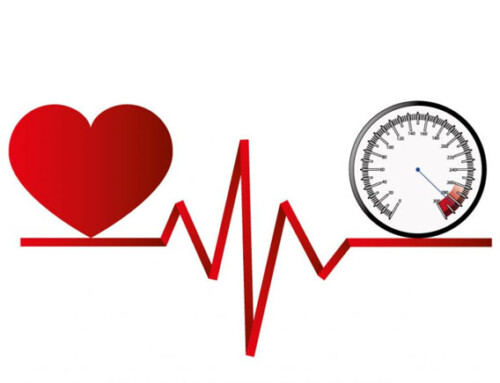Table of Contents
Thiazide (and thiazide like) diuretics are important medications for the treatment of hypertension (HTN). Thiazide diuretics contain a benzothiadiazine core (hence the name thiazide).
Thiazide-like diuretics have the same physiologic effect of blocking the Na+Cl– cotransporter in the distal convoluted tubule, but do not contain the benzothiadiazine core.

This article will use the term thiazide in reference to both thiazide and thiazide-like diuretics.
For an overview of diuretics check out this article:
https://bcnephro.com/diuretics-an-overview/
And this video:
Diuretics: An Overview @BCNephro
Choice of Thiazide – Why Chlorthalidone is better
Although HCTZ is more commonly prescribed, chlorthalidone is considered to be a better antihypertensive, better in that it has greater efficacy, and a better track record of decreasing cardiovascular endpoints.
Why is Chlorthalidone More Effective?
- It has a longer half life
- Chlorthalidone T½ – 40-60 hours
- Hydrochlorothiazide T½ – 6-15 hours
- It is more potent
- Chlorthalidone is 1.5 – 2 times more potent than HCTZ
Although this article does not address indapamide (as I have less clinical experience with this drug), the same may apply as it is also more potent and has a longer half life than HCTZ.
Head to head studies often compare a 50% dose of chlorthalidone to HCTZ to account for the higher potency.
- Some studies have shown a better nocturnal and 24 hour ambulatory BP with chlorthalidone (which may be mitigated if the HCTZ is dosed twice daily). This is not surprising given the longer half life.
- There has not been a significant reduction in office daytime BP with thi dosing strategy.
The studies are summarized and referenced in this review article.
The evidence-based use of thiazide diuretics in hypertension and nephrolithiasis
However, this is not how these diuretics are used.
- HCTZ is most often prescribed at 12.5-25 mg per day and only rarely increased to a total daily dose of 50 mg or higher.
- Chlorthalidone is most often prescribed at the same dose of 12.5- 25 mg per day. The generic formulation does not come in lower than 25 mg strength. There is a brand formulation that has a 15 mg dose, however this is 3-4 times more expensive than the generic.
What about Metabolic Side Effects?
Thiazides can cause metabolic side effects including:
- Hypokalemia
- Hyperglycemia
- Hyperlipidemia
- Hyperuricemia
- Hypomagnesemia
- Hyponatremia
Most studies have not shown a significant difference in metabolic complications with chlorthalidone (at 50%) dose when compared to HCTZ. My clinical experience is that severe hypokalemia is not common at the 25mg dose of chlorthalidone, perhaps because many patients are also on renin angiotensin system blockers. Either way the metabolic panel should be monitored closely (within 1-2 weeks) of initiating or adjusting the dose of either of these diuretics.
Recent Studies of Chlorthalidone
Comparison with HCTZ for reduction of Cardiovascular events
The conclusion:
“In this large pragmatic trial of thiazide diuretics at doses commonly used in clinical practice, patients who received chlorthalidone did not have a lower occurrence of major cardiovascular outcome events or non-cancer- related deaths than patients who received hydrochlorothiazide”
So Chlorthalidone is not better than HCTZ? It’s cardiovascular outcomes that matter right?
A closer look at the trial does not show that HCTZ and chlorthalidone are equivalent.
Here’s what they did:
- Took patients on HCTZ 25 or 50 mg day (most were on 25 mg)
- Randomized them to:
- Continue the same dose of HCTZ
- ½ the dose of Chlorthalidone
- 5 mg (if 25 mg HCTZ dose)
- 25 mg (if 50 mg HCTZ dose)
Here’s what they found:
- The majority of the patients (95%) were randomized to chlorthalidone 12.5 mg vs HCTZ 25 mg
- They achieved the same systolic BP. Mean SBP was 139 at initiation with no significant change or difference between groups throughout the study.
- Conclusion: You get the same BP and the same cardiovascular risk using ½ the dose of chlorthalidone.
Per the study authors:
“Therefore, the primary comparison in this trial was between 25 mg of hydrochlorothiazide and 12.5 mg of chlorthalidone. These results should not be extrapolated to other doses of these medications”.
My take:
I maintain my belief that 25 mg of chlorthalidone is more effective than 25 mg of HCTZ.
You could just increase the HCTZ to 50 mg a day, but really would need to make it 25 mg twice a day given the shorter half-life.
Effectiveness of Chlorthalidone in Advanced Chronic Kidney Disease
What about use in CKD?
It was often taught that thiazide diuretics were ineffective in more advanced CKD. The JNC 7 and KDIGO 2021 Hypertension in CKD guidelines recommended use of loop (as opposed to thiazide) diuretics with an eGFR < 30 one should use a loop diuretic as opposed to a thiazide/ thiazide like diuretic.
The CLICK study showed chlorthalidone is effective for hypertension in stage 4 CKD.
Chlorthalidone for Hypertension in Advanced Chronic Kidney Disease | New England Journal of Medicine
Here’s what they did:
- Took patients with stage 4 CKD (mean eGFR 23.2 +/- 4.2) and uncontrolled BP
- Randomized them to chlorthalidone vs placebo (initial dose 12.5 mg day – uptitrated to max 50 mg day)
- Initial mean 24 hr BP:
- Chlorthalidone 6/ 74.6
- Placebo 140.1 /74.6
Here’s what they found:
- Chlorthalidone resulted in a net 24 hour BP decrease of 10.5/3.9 greater than placebo
- Mean chlorthalidone dose at 12 weeks was 23.1 mg
- Majority of BP drop occurred within initial 4 weeks
- Chlorthalidone also resulted in improved albuminuria
- Net 50% decrease compared with placebo
- Mean baseline albumin creatinine ratio 600 mg/gram – 300 mg/ gram at 12 weeks
The concern:
- Many patients with stage 4 CKD are already on loop diuretics (60% in this study)
- This study standardized the loop diuretic to torsemide 10-20 mg per day. Patients were not clinically volume overloaded.
- The combination of loop and thiazide diuretics increases the risk for hypokalemia and acute kidney injury. In this study:
- Hypokalemia – 10%
- Creatinine increase of > 25%
- Loop diuretic + chlorthalidone – 59%
- Chlorthalidone (no loop diuretic) – 21%
Per the study authors in a response to a letter to the editor.
Chlorthalidone for Hypertension in Advanced CKD | NEJM
“A prescription for chlorthalidone should be accompanied by regular monitoring for adverse effects related to electrolyte changes, kidney function, blood pressure, and orthostatic symptoms. We have emphasized the need for caution in starting chlorthalidone in a patient already on a loop diuretic. In such patients, instead of using chlorthalidone at a dose of 12.5 mg daily, we suggest initiating treatment for hypertension with chlorthalidone at a dose of 12.5 mg three times per week.”
My take
- CKD, clinical volume overload, and HTN not controlled
- Advance loop diuretics until clinically euvolemic
- Torsemide may be preferable
- CKD clinically euvolemic and HTN not controlled
- Change loop diuretic to torsemide
- Change loop diuretic to chlorthalidone
- Add low dose chlorthalidone (i.e. 12.5 mg 3x a week) to torsemide with close monitoring of renal function and electrolytes.
Summary
Chlorthalidone 12.5 – 25 mg daily may be the best thiazide diuretic option for HTN. Chlorthalidone 25 mg is more effective than HCTZ 25 mg and most patients can tolerate it with an acceptable side effect profile. That HCTZ is more commonly prescribed than chlorthalidone despite the inferior efficacy is curious, but it gives me an opportunity to switch in cases referred to me with uncontrolled or “resistant” HTN. Chlorthalidone has demonstrated efficacy in advanced (stage 4 CKD), although combining with a loop diuretic should be done cautiously and with close monitoring.



